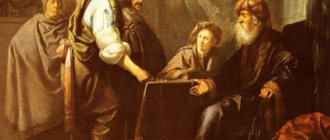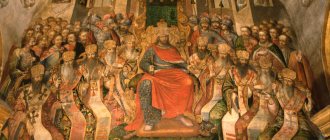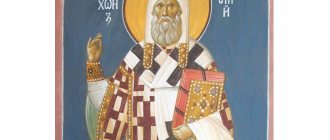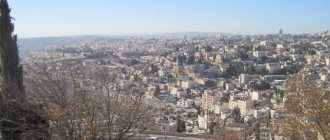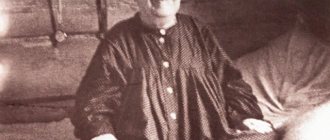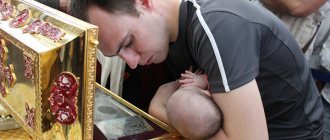PARABLE OF THE THREE LAUGHING SAINTS (from OSHO)
The parable of the Three Laughing Saints tells how they did nothing but laugh. They wandered from town to town, stopping at the market square and laughing. And they didn’t just laugh, they laughed from their hearts. And it was simply contagious: the whole bazaar began to laugh. People could have been thinking about money and worries just a moment ago, but these three came and everything changed instantly. People forgot that they had come to buy and sell, greed disappeared, and for a few minutes another world opened up. And so they traveled all over China, just helping people laugh. Sad, angry, greedy, jealous - everyone: everyone next to them began to laugh. And many felt the key: laughter changes; by laughing, you can transform yourself. And then one day in some village a wanderer died. The residents decided: Their friend died, now they will cry. But the two, dancing and continuing to laugh, celebrated death. Residents were indignant: this is too much! What sacrilege! When someone dies, there is no room for laughter and dancing. But the sages answered: All our lives we laughed together. How else can we say goodbye to a friend? We should laugh, enjoy, celebrate. This is the only possible farewell to a man who has laughed all his life. And if we don’t laugh, he’ll think: “Fools! So you fell for the bait again? We know that he didn't die. How can laughter die, how can life die? The body was to be put on fire, and the villagers suggested: “We will wash the body as prescribed by the ritual.” But both mystics stopped them: “No, our friend asked not to perform rituals on him, not to change his clothes and not to wash his body, but to put him as is, on the funeral pyre. And we must respect his will." Then something incredible happened: the fire touched the body, and then the dead man performed his farewell trick. Under his clothes, the elder hid various devices for fireworks and the funeral turned into a festival of colorful lights and colors. The whole village burst into laughter. And two incredibly cheerful friends began to dance, dragging all the villagers along with them. It was not death, but resurrection, new life. Every death opens up new life. Laughter is eternal, says Osho, life is eternal, celebration is endless. The actors change, but the performance does not end. The waves change, but the ocean exists and will remain. You laugh, then someone else laughs, and the laughter goes on and on. You celebrate, others celebrate and the celebration is endless. Existing is continuous, said the great mystic of the 20th century, it is eternal, there is not a single gap in it. Death is not death, for every death opens a new door, gives rise to something new. There is no end to life; a new beginning, resurrection, is always hidden in it. “Replace sadness with celebration, only then can you turn your death into resurrection,” says the mystic. And he recommends learning this art while there is still time.
Three elders
Three eldersOptions
Forward
THREE ELDERS.
And when you pray, do not say too much, like the pagans, for they think that for their many words they will be heard. Don't be like them; for your Father knows what you need before you ask Him (Matt. VI: 7, 8).
The bishop sailed on a ship from the city of Arkhangelsk to Solovetsky. On the same ship the pilgrims sailed to the saints. The wind was fair, the weather was clear, there was no sway. The pilgrims - who were lying down, who were having a snack, who were sitting in groups - were talking with each other. The bishop also went out onto the deck and began walking back and forth along the bridge. The bishop approached the nose and saw that a bunch of people had gathered. A little man points something in the sea with his hand and speaks, and the people listen. The bishop stopped and looked where the peasant was pointing: nothing was visible, only the sea glistening in the sun. The bishop came closer and began to listen. A little man saw the bishop, took off his hat and fell silent. The people also saw the bishop, they also took off their hats and showed respect.
“Don’t be shy, brothers,” said the bishop. “I also came over to listen to what you, good man, were saying.”
“Yes, the fisherman told us about the elders,” said one bolder merchant.
- What about the elders? - asked the bishop, walked up to the side and sat down on the box. - Tell me too, I’ll listen. What were you showing?
“Yes, there’s an island looming,” the man said and pointed forward to the right. “On this very island the elders live and are saved.
- Where is the island? - asked the bishop.
- Look at my hand, if you please. There's a cloud over there, down to the left of it you can see like a stripe.
The bishop looked and looked, the water rippled in the sun, and he could not see anything without habit.
“I don’t see,” he says. - So what kind of elders live here on the island?
“God’s people,” answered the peasant. “I’ve heard about them for a long time, but I haven’t seen them, but last summer I saw them myself.
then two more came out; They fed and dried him and helped him repair the boat.
-What are they like? - asked the bishop.
“One is small, hunched over, very ancient, in an old duckweed, probably more than a hundred years old, the gray in his beard has already begun to turn green, and he himself is still smiling and bright, like a heavenly angel. The other one is taller, also old, in a torn caftan, a wide beard, gray with yellow tint, and a strong man: he turned my boat over like a tub, before I even had time to help him, - also joyful. And the third is tall, with a long beard down to his knees and white as a harrier, and he is gloomy, his eyebrows hang over his eyes, and he is completely naked, only girded with a matting.
- What did they say to you? - asked the bishop.
“They did more and more in silence, and they didn’t say much to each other.” And one person will look, and the other will understand. I began to ask the tall man how long they had been living here. He frowned, said something, really got angry, but the ancient little one now took him by the hand, smiled, and the big one fell silent. The ancient one just said, “Have mercy on us,” and smiled.
“Now it’s completely visible,” said the merchant. “If you please take a look, Your Eminence,” he said, pointing.
- island. The bishop looked and looked and walked away from the bow to the stern and approached the helmsman.
“What is this island,” he says, “you can see here?”
- And so, nameless. There are many of them here.
“Is it true,” they say, “that the elders are saved here?”
“They say, Your Eminence, but I don’t know if it’s true.” The fishermen, they say, saw it. Yes, too, sometimes they talk in vain.
“I want to land on the island to see the elders,” said the bishop. - How to do it?
“You can’t approach the ship,” said the helmsman. You can go on a boat, but you have to ask the elder.
The elder was called.
“I would like to see these elders,” said the bishop. - Can you take me?
The elder began to dissuade him. “It’s possible, but we’ll spend a lot of time and, I dare say, to your Eminence, there’s no point in looking at them.” I heard from people that these old people live very stupidly, they don’t understand anything and can’t say anything, like fish in the sea.
“I wish,” said the bishop. “I’ll pay for my troubles, take me.”
There is nothing to do, the shipmen ordered, and adjusted the sails. The pilot turned the ship and sailed to the island. They brought a chair to the bishop's nose. He sat down and looked. And all the people gathered at the bow, everyone was looking at the island. And those with sharper eyes can already see the stones on the island and show the dugout. And one of them even saw three elders. The elder brought out the trumpet, looked into it, and handed it to the bishop. “Exactly,” he says, “there are three people standing on the shore, right next to a large stone.”
The bishop looked into the pipe and pointed it where it was needed; exactly, there are three standing: one is tall, the other is shorter, and the third is completely small; standing on the shore, holding hands.
— The elder approached the bishop. - Here, Your Eminence, the ship needs to stop. If you really want, you can take a boat from here, and we’ll anchor here.
Now they released the cable, dropped the anchor, lowered the sail - the ship jerked and swayed. They lowered the boat, the rowers jumped off, and the bishop began to go down the ladder. The bishop came down, sat down on a bench in the boat, the rowers struck their oars, and swam to the island. They swam up like throwing a stone; they see three elders standing: the tall one is naked, girded with matting, the shorter one is in a torn caftan, and the ancient one, hunched over, is wearing an old duckweed; All three are standing, holding hands.
The rowers moored to the shore and got caught in the hook. The bishop came out.
The elders bowed to him, he blessed them, and they bowed even lower to him. And the bishop began to tell them:
“I heard,” he says, “that you are here, the elders of God, saving yourself, praying for people to Christ God, and here, by the grace of God, I am an unworthy servant of Christ, called to shepherd His flock; so I wanted to see you, the servants of God, and if I can, give you an instruction.
“Tell me how you are saved and how you serve God,” said the bishop.
The middle old man sighed and looked at the elder, at the ancient one; The tall old man frowned and looked at the elder, at the ancient one. And the eldest, ancient old man smiled and said: We, servant of God, do not know how to serve God, we only serve ourselves, we feed ourselves.
- How do you pray to God? - asked the bishop.
“Three of you, three of us, have mercy on us!”
The bishop grinned and said:
You’ve heard about the Holy Trinity, but that’s not how you pray. I have loved you, elders of God, I see that you want to please God, but you do not know how to serve Him. This is not how you should pray, but listen to me, I will teach you. I will not teach you from myself, but from God’s Scripture I will teach you how God commanded all people to pray to him.
And the bishop began to explain to the elders how God revealed Himself to people: he explained to them about God the Father, God the Son and God the Holy Spirit and said:
“God the Son came to earth to save people and taught everyone to pray. Listen and repeat after me.
"Our Father". And one elder repeated: “Our Father,” another repeated: “Our Father,” and a third repeated: “Our Father.” - “Who art in heaven.” The elders also repeated: “Who art in heaven.” Yes, the average old man got confused in his words and said the wrong thing; The tall, naked old man did not speak either: his mustache was overgrown with his mouth - he could not pronounce it clearly; The ancient toothless old man muttered indistinctly.
The bishop repeated it again, and the elders repeated it again. And the bishop sat down on a pebble, and the elders stood near him, and looked into his mouth, and repeated after him while he spoke to them. And the bishop worked with them all day until evening; and ten, and twenty, and a hundred times he repeated one word, and the elders repeated after him. And they got confused, and he corrected them and made them repeat it all over again.
And the bishop did not leave the elders until he had taught them the entire Lord’s Prayer. They read it after him and read it themselves. The middle old man understood it first and repeated it all himself. And the bishop ordered him to say it again and again, and repeat it again, and the others read the entire prayer.
It was already getting dark, and the moon was beginning to rise from the sea, when the bishop got up to go to the ship. The bishop said goodbye to the elders, they all bowed to his feet. He picked them up and kissed each one, told them to pray as he had taught them, and got into the boat and sailed to the ship.
And the bishop sailed to the ship, and kept hearing how the elders loudly repeated the Lord’s Prayer in three voices. They began to swim up to the ship, the voices of the elders could no longer be heard, but it was only visible during the month: standing on the shore, in the same place, three elders - one of the smaller ones in the middle, the tall one on the right, and the middle one on the left side. The bishop drove up to the ship, climbed onto the deck, took out the anchor, raised the sails, inflated them with the wind, moved the ship, and sailed on. The bishop walked to the stern and sat down there, and kept looking at the island. At first the elders were visible, then they disappeared from view, only the island was visible, then the island disappeared, only the sea played in the monthly light.
they learned to pray, and thanked God for bringing him to help God’s elders, to teach them the word of God.
The bishop sits like this, thinks, looks out to sea, in the direction where the island has disappeared. And it dazzles in his eyes - here and there the light will sparkle across the waves. Suddenly he sees something shining and turning white in the menstrual column: a bird, a seagull, or a sail on a boat turning white. The bishop took a closer look. “The boat,” he thinks, “is running after us on a sail. Yes, it will soon catch up with us. It was far, far away, but now it seems very close. And the boat is not a boat, it doesn’t look like a sail. And something is running after us and catching up with us.” And the bishop cannot make out what it is: a boat is not a boat, a bird is not a bird, a fish is not a fish. It looks like a person, but it is very large, but a person cannot be in the middle of the sea. The bishop stood up and approached the helmsman:
“Look,” he says, “what is this?”
- What is this, brother? What is this? - asks the bishop, and he himself sees - the elders are running on the sea, their gray beards are white and shiny, and, as if standing, they are approaching the ship.
The helmsman looked around, was horrified, dropped the helm and shouted in a loud voice:
- God! The elders are running after us across the sea, as if on dry land! “The people heard it, stood up, and everyone rushed to the stern. Everyone sees: the elders are running, holding each other hand in hand - the outermost ones are waving their hands and ordering them to stop. All three run on water as if on dry land and do not move their legs.
Before the ships had time to stop, the elders caught up with the ship, came right under the side, raised their heads and spoke in one voice:
- They forgot, servant of God, they forgot your teaching! While they were repeating it, they remembered, they stopped repeating it for an hour, one word jumped out - they forgot, everything fell apart. We don’t remember anything, teach us again.
The bishop crossed himself, leaned over to the elders and said:
“Your prayer also reaches God, elders of God.” It's not for me to teach you. Pray for us sinners!
HISTORY OF WRITING AND PRINTING.
The plot of the tale of the three elders belongs to the wandering ones. It is known in various modifications: the number of elders, their prayers, the location of the action, etc. vary. This story is also known in oral retellings, such as, for example, the story of the storyteller Erofey, recorded (by M. I. Semevsky)[254] and in written monuments. In the latter case, the legend is associated with the Western translation of the story about the appearances of Augustine, bishop. Hipponian (354-430), which has been known in Russia since the 16th century. Prince A.M. Kurbsky, who heard it from Maxim the Greek, but did not know whether it had been translated into Russian before him.[255] In Augustine's story, instead of Tolstoy's three elders, one elder is depicted, whom Augustine saw, returning from the Council of Carthage, on an island in the Mediterranean Sea, “empty and uninhabited,” where his ship landed. The hermit was “naked” and “many-year-old”; he was born in “African soil,” “from the Italian language.” From his answers to Augustine’s questions, it turned out that he knew the prayers “by no means skillfully and inconsistently,” “putting them above the ground,” that is, by mixing up the order of words. Augustine was amazed at his devotion to God and at the same time at his “unart,” and began to teach him prayers. He covered his nakedness with his clothes and swam further when the wind became favorable. On the second day, the “shipwomen” from above saw a man on the sea who was chasing the ship like “a swiftly flying bird or an arrow shot from a bow,” as he approached asking him to wait for him: “Wait, for God’s sake, wait for me, a sinner.” The bishop, who came up, saw the elder sailing on the sea, spreading half of his clothes across the water and holding half of them instead of a sail. And having reached the ship, the elder went up with a prayer to Augustine, who was prostrate before him: “Rise up, O bishop, I pray that you have forgotten these prayers that you have learned, and I pray now that you will study them again, as they are foolish.” And having repeated his prayers again, he got off the ship, sat down again on his clothes and returned to the desert in the same way, sailing across the sea “with the fastest desire according to the first custom.”
We see how close the basis of Tolstoy’s story is to Augustine’s legend, but of course, Tolstoy did not use it; undoubtedly he became acquainted with this legend through oral, folk, Russian transmission. According to P.I. Biryukov[256], Tolstoy heard a legend from the Olonets storyteller V.P. Shchegolenok[257] (see about him above in the commentary to the story “How People Live”); However, it should be noted that in the notebook with Tolstoy’s notes and legends that he heard from Shchegolenok, this legend was not preserved. It cannot be emphasized enough that in his story about the three elders, Tolstoy, in order to give vitality to the narrative, moved away from it the miraculousness that is necessary in all tales about the three elders, and imagined catching them on the water with the vision of a bishop.
“The Three Elders” (three manuscripts and proofs) can be divided into two editions and a stylistic reworking of the text, which was called the third edition by the copyist. The main difference between the two editions is in the depiction of the bishop’s vision or dream: The first story about the dream more closely conveys the old legend, since here everyone present sees something mysterious (for example, the “shipwomen” in Augustine’s legend). Tolstoy, in the first outline of the story, depicted that the people were the first to notice the elders running on the water and the bishop, having heard the general conversation, approached those gathered (his dream is visible only from the words: “everything fell silent and the bishop thought... raised his head”). In the second edition, Tolstoy deviated from the usual legend: the first bishop sees (his dream is depicted: “his eyes ripple, here and there the light will play on the waves. Suddenly he sees”...): he rises, shows the helmsman asking him to see what is visible on the sea; The helmsman screams in horror, the people have risen... Let us note an interesting detail: in the first edition the elders walk on the water without holding on to each other; in the second, they hold each other hand in hand, as at the first meeting on the island; The bishop remembers most vividly in his dream the first impression he had of the sight of the elders in reality.
The writing of the story “The Three Elders” probably dates back to June 1885. In one letter to V.G. Chertkov (Ch) on June 18, 1885, Tolstoy talks about writing a new story for “The Mediator”: “I wrote another story for you , and, it seems, better than before.” The compiler of explanatory notes to these letters, A.K. Chertkova[258], expresses the idea that this story, “The Three Elders,” is “a very beloved legend” by Tolstoy. L. Ya. Gurevich suggests that Tolstoy was talking here about another story - about “The Candle”.
“The Three Elders” was published for the first time in “Niva” 1886, 13, column. 330-334 (censorship approval March 26, 1886). To the title of the story “The Three Elders” in “The Collected Works of L.N. Tolstoy” (ed. 10 et seq.) the subtitle “From folk tales on the Volga” was added, which is not in all manuscripts of the story and in the first editions in 1886 “ Collected Works". The manuscripts also do not contain the subtitle that was placed in the first edition of the story in the Niva magazine: “Three Elders, a Folk Legend.” From this we can see that these added subtitles, which are not only common, but also short, do not belong to Tolstoy. That it was not the Volga legend that served as the basis for the story, but rather the northern one, is evident from the names of the local, northern ones. It is interesting that Tolstoy’s story served, for its part, as the basis for a new fairy tale about the Three Elders, who know only one prayer, “Three of you, three of us, have mercy on us,” and who, with the help of the bishop, memorize “I Fatherly” and then, forgetting this prayer, follow behind the ship they “scratch the water.” This story was recorded in the Yenisei province in 1900 by A. A. Makarenko.[259] From what has been said, it is clear how great the degree of vitality of this plot is.
DESCRIPTION OF MANUSCRIPTS.
The story is preserved in three manuscripts and a proof copy. The manuscripts belong to the V. G. Chertkov Archive, transferred to the State Technical Committee, and are stored in folder 8 under Nos. 27, 28 and 29. Proofreading - in BL under code. V, 9, 5 pp.
° and 4°, 4 sheets. Apparently written in one sitting, with minor blots. On ob. sheet 1 - an excerpt from “The Death of Ivan Ilyich” (not the first edition, by someone else’s hand). Title: “The Three Elders” and a reference to the Gospel of Matthew. VI. 7-8. Beginning: “The Bishop sailed on a ship from the city of Arkhangelsk to Solovetsky”... On the cover in the hand of A. L. Tolstoy: “Three Elders (draft).”
2) Manuscript No. 28. Copy by V. G. Chertkov, with numerous amendments and additions by Tolstoy. 4°, 14 pp. On the cover in blue pencil: “Second Edition.” Title: “Three Elders.” Beginning -8): “The bishop sailed on a ship from the city of Arkhangelsk to Solovki”... The changes and corrections are significant: For example. in the 1st edition, the elders running on the sea were first seen not by the bishop, but by other travelers, who began to look and reason; the bishop approaches, asks and then peers and sees the elders. In the second edition, the bishop sees the elders first, the rest are asleep. The bishop approaches the helmsman and asks to see what is visible; he sees the elders, is horrified and screams; the people jump up, and everyone sees the elders approaching the ship.
3) Manuscript No. 29. A copy by V. G. Chertkov from the previous one. 4°, 13 sheets of lined notebook paper, with corrections and additions by Tolstoy’s hand and another. Title: “Three Elders.” Beginning (after the epigraph from Matthew VI. 7-8): “The Bishop sailed on a ship from the city of Arkhangelsk to Solovki”... Sheets with signs of being in the printing house. Apparently, they typed from this manuscript for the publication. 1886. Amendments not made by Tolstoy from proofreading. On the cover in blue pencil: “Third edition.”
4) Proofreading for publication. 1886 (Works of L.N. Tolstoy, part 12. M. 1886), with amendments and additions by Tolstoy himself and S.A. Tolstoy and signed by S.A. Tolstoy for printing.
“Works of gr. L. N. Tolstoy. Part 12. Works of recent years. M. 1886", pp. 154-162.
Footnotes
254. “Notes of the Fatherland” 1864, v. 152.
“The Three Elders” by L. N. Tolstoy and “The Tale of the Apparitions to Augustine” (Historical and literary collection, dedicated to Vs. I. Sreznevsky), L. 1924, pp. 201-296.
256. Biryukov, P. I. L. N. Tolstoy. Biography. Ed. 3, vol. 2, p. 122.
“Language and legend in the notes of L. N. Tolstoy” (F. S. Oldenburg, to the fiftieth anniversary of scientific and social activity 1882-1932, Collection of articles, p. 476).
258. Tolstoy’s yearbook of 1913. P. 1914. II. 25, 2 pr. t. 85, p. 229.
259. See “Russian fairy tales and songs in Siberia and other materials.” Krasnoyarsk, 1902, edited by Potanin.
| Three Elders Options Forward |
